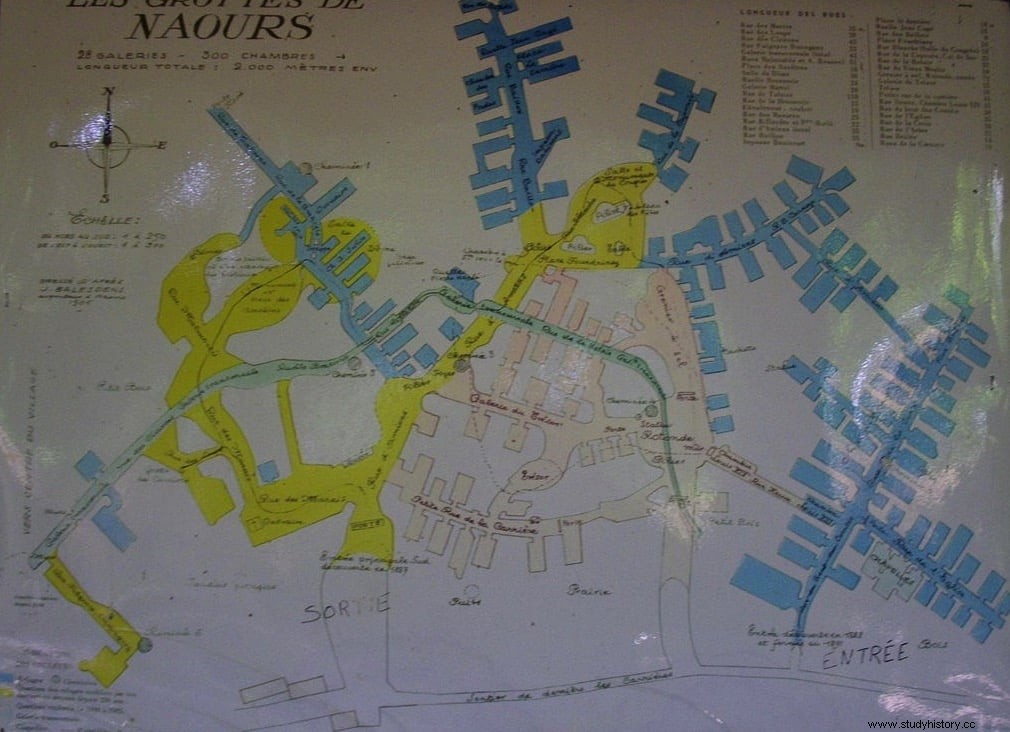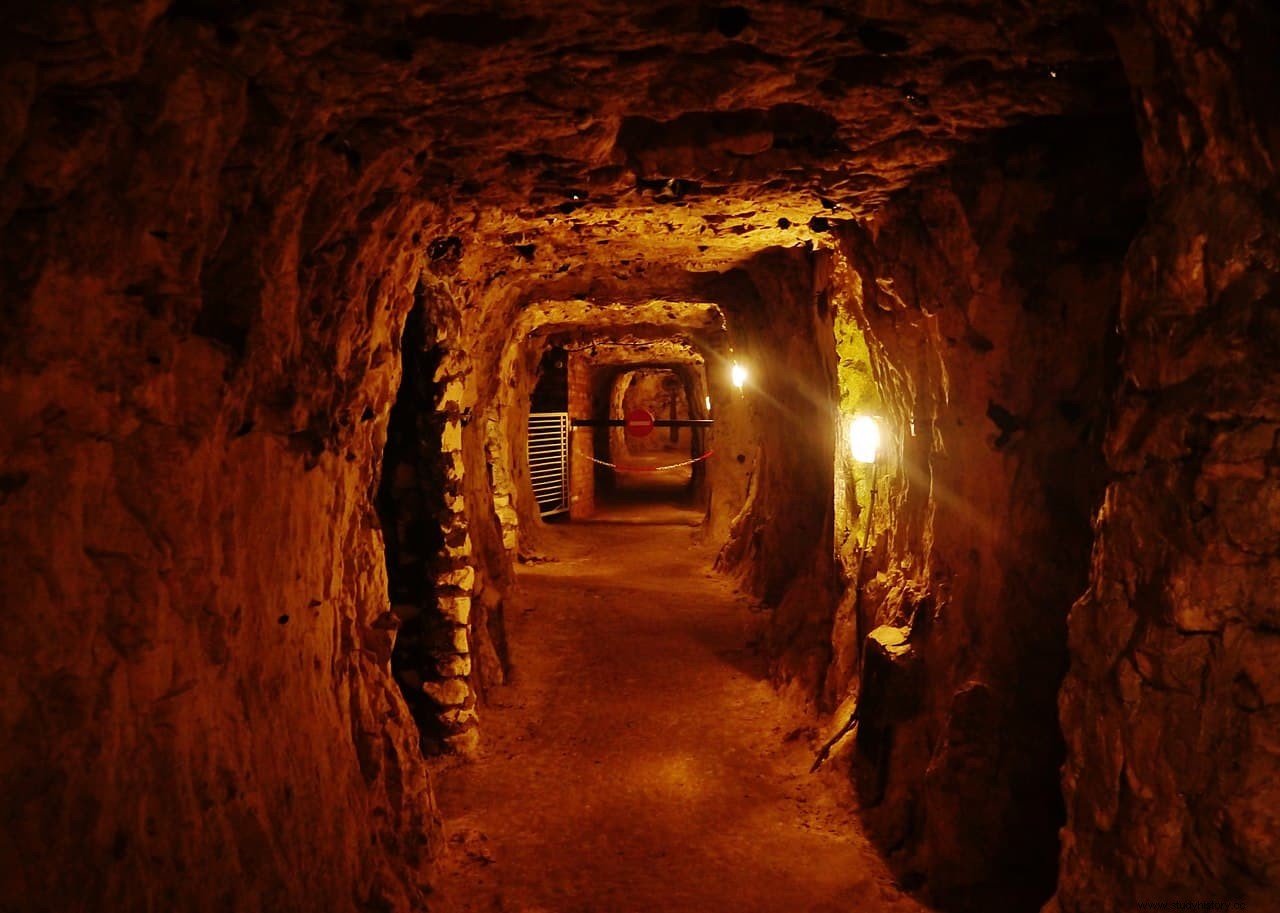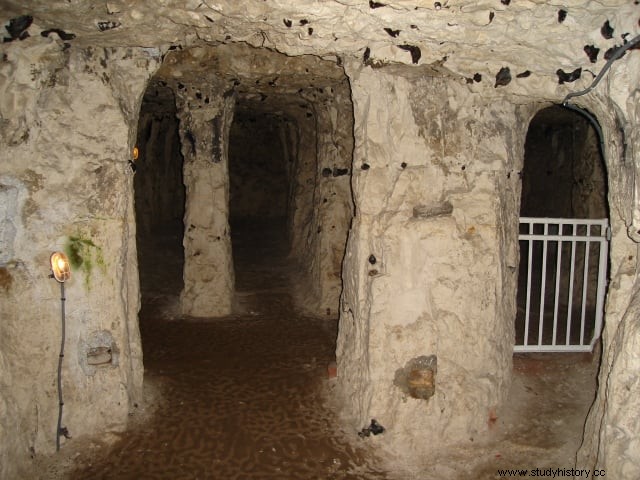In the north of France, near Amiens, is the underground city of Naours, built in the 10th century, rediscovered in 1887, and used by the Nazis in World War II.
That area of France has suffered numerous vicissitudes, wars and conflicts since the Middle Ages. Often the inhabitants of the village of Naours , which today has about a thousand inhabitants, saw how the armies devastated their lands and took away the provisions they needed to support the troops, threatening the very subsistence of the place.
For this reason, at some point in the 10th century, they decided to build a shelter, where they could hide themselves, their cattle and grain, in difficult times. Little by little they dug holes in the earth and excavated galleries, as the population increased, under a nearby hill and at a depth of 33 meters .
By the 17th century, the underground city already had 28 galleries and more than 300 rooms with a height of between 1.60 and 2 meters, with a capacity to accommodate more than 3,000 people. In addition, they had built numerous squares at the intersections, three chapels, stables, canals and water wells, ventilation holes and chimneys for the extraction of smoke from the kitchens and bread ovens.

The place was regularly occupied between those centuries, sometimes for long periods of time, as evidenced by the numerous inscriptions that have been found on the walls, with dates ranging from the year 1340 to 1792. It seems that it was precisely during the first half of the century XVII, during the Thirty Years' War, when the underground city reached its height of occupation.
It was rediscovered on December 15, 1887 by the priest Ernest Danicourt, who dedicated a good part of his life to exploring, investigating and restoring the galleries. In them he found a multitude of everyday objects and utensils that allowed him to date the dates on which the place had been occupied. Also human and animal bones, as well as a large number of coins, fossils of inoceramus (an extinct bivalve similar to oysters) and even a treasure of 20 gold pieces.

From his investigations it was deduced that the place had been used for the last time in the time of Louis XVI , at the end of the 18th century, probably by salt smugglers, who established a deposit there to avoid the tax levied on this element.
Then the caves were forgotten until they were used during the two world wars. First by the British, who used them as an ammunition and fuel store in the First World War, leaving behind the largest concentration of graffiti known from that conflict. And then by the Nazis in 1941 for the same purpose, and in 1943 as part of the Atlantic Wall, reinforcing its walls with masonry.

With the advance of the allied troops, the Germans took in their retreat everything they could from inside the caves, where the collections gathered by Danicourt were still to be found, of which nothing has been heard since.
Since 1949, the underground city of Naours has been open to the public and can be visited, being one of the main tourist attractions in the area, with a small museum, restaurant, picnic area and playground.
